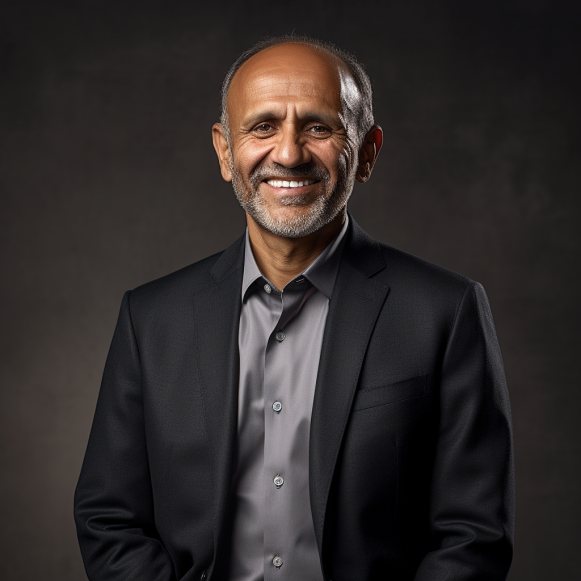Move over, Peloton. Rucking is the newest fitness craze in Silicon Valley and beyond.

When entrepreneur Zain Memon senses that the midday slump is approaching, he knows it is time to lace up his shoes and head out for a hike in one of his favorite outdoorsy spots in San Francisco, such as Buena Vista Park, Mount Sutro Forest, or one of the other parks and forests in the city.
But before he walks out the door, he makes sure to grab two things: the leash for his dog Joy and a backpack that is loaded with a plate that weighs 35 pounds.
Rucking is a phenomenon that in recent years has become popular among people who are interested in getting physically fit. Memon is one of the many people who work in the technology industry who have become enthusiastic fans of rucking. The idea behind rucking is straightforward: walkers and hikers add resistance to their workouts by carrying weights in a backpack. Rucking provides a one-two punch of cardio and strength training that can be lower impact than running or an HIIT workout, making it an attractive option for people who have limited time to devote to working out.
Rucking, in particular, is resonating with entrepreneurs in Silicon Valley who have a strong desire to maximize every aspect of their lives, whether it be the types of startups and venture capital firms that they run or the types of workouts that they do. Rucking is a form of bodyweight squatting.
Memon, who is credited with cofounding the artificial intelligence healthcare startup Eureka Health, attributes his ability to keep up with his high-energy dog to the conditioning his body received from rucking. As he navigates the world of being a founder, it has also become an important part of his routine for maintaining his mental health and his social life. According to Memon, the renowned startup-accelerator program known as Y Combinator, of which he was a part in the year 2010, even has a group of alumni who get together to ruck.
“I’ll decide on a route ad hoc, and I walk as quickly as I can without headphones or other people with me,” he said in an interview with Insider. “I’ll decide on a route ad hoc.” “It’s a chance to get some rest, to spend some time by yourself, and to enjoy some silence. It has made a significant difference in the state of my mental health.
Rucking is making waves in Silicon Valley
The term “rucking” comes from the word “rucksack,” which is another term for backpack and is frequently used in the outdoors community, especially by hikers and members of the military. Despite the fact that rucking has recently become popular in tech circles, among fitness influencers, and on TikTok, the practice of carrying around heavy things and training to do so dates back thousands of years. According to a history of the backpack published by REI, the first version of the rucksack was so uncomfortable that it was quickly discarded after its inventor, Henry Merriam, patented it in 1878 for use by soldiers of the United States Army to more evenly distribute their weight and increase their mobility.
The dreaded “ruck march” is still a standard component of basic military training in the United States. During this exercise, recruits are required to march for several hours while carrying rucksacks weighing approximately 45 pounds each.
It is not clear how the practice, which is regarded as a fundamental — albeit reviled — military ability, spread to civilians in the first place. But as of right now, there are over 20 million videos on TikTok that are related to rucking, and the name-brand equipment for the exercise can cost anywhere from $200 for a weighted vest to $255 for a backpack (plates are not included).
Wilson Kriegel is not a novice when it comes to grueling workouts: Before falling in love with extreme sports like mountaineering and speed climbing, the serial entrepreneur was a college track athlete who competed in 10Ks and half-marathons. He competed in these events before discovering his passion for entrepreneurship.
Throughout your life, you will encounter many situations in which you will need to construct something or find a solution to a problem. Some of these situations include starting a business, being in a relationship, or participating in extreme sports. It was Wilson Kriegel.
There’s this consistency of building and solving for things across a variety of aspects throughout your life, whether it’s startups or relationships or extreme sports. Wilson Kriegel
But in order to accomplish significant athletic achievements, such as speed-summiting Denali, the highest peak in North America, in just four days (according to the National Parks Service, climbers can typically expect to summit Denali in anywhere from 15 to 18 days), Kriegel has turned to rucking as a way to efficiently train while still residing in an apartment in New York City. A highlight of this endeavor was speed-summiting Denali in just four days.
“Denali is 22,000 feet of elevation, and you have to carry 80 to 100 pounds across a glacier,” according to him. “To train for that and get comfortable with the discomfort, there’s a lot of stair training and running with weights.”
Buildstock is a B2B marketplace for the construction materials industry, and Kriegel is the cofounder and CEO of the company. Pitch and Run is a community that holds weekly runs for people working in the technology industry on the West Side Highway in New York City, which he also helped found. The meetups would not be complete without him wearing his weighted pack.
Kriegel believes that his strategy for developing a startup is directly related to his commitment to achieving lofty fitness goals and his ability to turn unpleasant workouts into a habitual part of his routine.
“All of the skills that you develop doing fitness are replicable to what you develop working on startups because they’re all about how you fine-tune a craft and develop the mind,” said the professor. “There’s this consistency of building and solving for things across a variety of aspects throughout your life, whether it’s startups or relationships or extreme sports.”
After observing that his dog, Joy, had an endless supply of energy while out on walks, Memon, one of the cofounders of Eureka Health, stated that he began rucking approximately three years ago. He decided he needed to get in better shape if he was going to be able to keep up with her, so he grabbed a backpack and stuffed it full of unrelated items to make it heavier.
“I was reasonably active and went to the gym to lift, but I didn’t do too much from a cardio perspective,” according to him. When he started carrying weights with him on his walks and hikes, he found that they became even more enjoyable. As Memon continued to improve his rucking technique, he noticed that his friends and colleagues in the tech community were becoming interested in rucking on their own.
Today, Memon uses a backpack from GORUCK that has a capacity of 20 liters. He adds a plate weighing 35 pounds and various water bottles for additional weight.
“It feels like kind of the sweet spot where you can still do everything that you normally do while walking around, and it doesn’t feel too bad on my joints,” according to him.
According to Wendy Winn, a physical therapist and orthopedic clinical specialist at Custom Performance, a running-focused physical therapy practice in New York, rucking can be an effective way to gain fitness when compared to other forms of cardio exercise. Custom Performance is located in New York. She mentioned to Insider that she has witnessed an increase in people’s interest in rucking and weight training as supplemental activities to their existing outdoor pursuits such as trail running and hiking.
“Increasing weight you are carrying increases the demand on your cardiovascular system and therefore has a cardiovascular benefit for exercise,” said the researcher. “The muscular demand is also greater all the way from your hips to your ankles than regular walking, so you will gain strength in your legs over time.”
But Winn also cautioned that rucking does carry some risks, and that ruckers can help reduce their risk of injury by beginning with lighter weights and wearing shoes that absorb shock.
“Even though subjects in studies had high leg stress, they did not report feeling fatigued,” explained the researcher. This indicates that the ruckers did not experience feelings of fatigue but were more prone to injuries. According to each and every study done on rucking, the most significant dangers are overuse injuries to the legs and stress fractures.
A few founders and venture capitalists are leaving the company on their own terms.
Other startups and venture capital firms are incorporating the use of weighted packs into their day-to-day activities to assist them in optimizing both their physical fitness and the amount of work they have to do.
Take, for example, Charlie Hale, who is based in Los Angeles and is one of the cofounders of the online fitness platform Shred. While he goes through his workout routine in the gym, which consists of traditional weight lifting in addition to time spent on the StairMaster, he wears a weighted vest that he purchased from Amazon. Instead of rucking, he does this indoors.
I’m performing the same exercises as before, but this time with an additional 25 pounds of weight. Because of this, the time I devote to working out yields the greatest possible return on investment for me. This is Charlie Hale.
I’m doing the same exercises, but with 25 pounds more weight. That’s how I’m getting the most return on investment on the time I spend working out. Charlie Hale
“I’m always looking to get a little more out of the time I’m working out and to see how I can progress in 45 minutes and what I can do to continually challenge myself,” according to him. I’ve increased the weight that I’m lifting by 25 pounds, but I’m still performing the same exercises. Because of this, the time I devote to working out is providing me with the greatest possible return on investment.
Amanda Bradford, the founder of the dating startup The League, which was acquired by Match Group in the past year, has found that rucking has been the perfect way to amp up the intensity of group meetings and one-on-ones, which she typically takes during long walks in her neighborhood in Austin, Texas, or around Lady Bird Lake. Match Group purchased The League in 2017. She has tried weighted belts and weighted vests, but her favorite weighted bands are those that can be worn on the arms and ankles.
“I don’t like running, but to increase the hit rate and intensity of my walks and hikes, I’ll add weights,” according to her. “I’m a really big proponent of rucking.”
Bradford also mentioned that she would try to take as many calls as she could while rucking and that she had found that avoiding video calls was helpful in enhancing her ability to communicate with her teams.
“I’ve learned if you do something over the phone, people will share more when they’re not looking at Zoom screens, which can feel overwhelming,” according to her.
On the other hand, Zamir Shukho, a venture capitalist based in San Francisco, despises cardiovascular exercise and only reluctantly bought a bike a year ago so that he could maintain a higher level of exercise motivation. Even though an important member of his family, Lord Lincoln, an American Staffordshire terrier who regularly competes in dog shows, wears a weighted vest while exercising, the general partner at Vibranium.VC says he has friends who are big into rucking but has never been interested in trying it himself. He says he has friends who are big into rucking but has never been interested in trying it himself.
“My dog looks amazing, but I wanted to develop his chest muscles,” according to him. “I take the dog for a walk almost every day, and he wears his vest so that he can imitate the appearance of a military dog. He’s been hitting the gym hard. When I go hiking, my dog is the one who has to lug around the heavy pack.”






